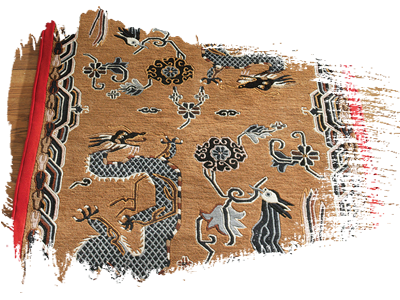| Tiger design rugs are found in several other carpet cultures, including Khotan rugs to the north, however it is amongst Tibetan weavers that these designs achieve their highest development. The designs are lively and amongst the most original of all traditional Tibetan motifs. |
Tibetan rug making is an ancient, traditional craft. Tibetan rugs are traditionally made from Tibetan highland sheep's wool, called changpel. Tibetans use rugs for many purposes ranging from flooring to wall hanging to horse saddles, though the most common use is as a seating carpet. A typical sleeping carpet measuring around 3 ft × 5 ft (0.91 m × 1.52 m) is called a khaden.
 The knotting method used in Tibetan rug making is different from that used in other rug making traditions worldwide.
The knotting method used in Tibetan rug making is different from that used in other rug making traditions worldwide.
Tibetan rugs from the 19th century (perhaps earlier, though mostly rugs from the 19th century survive) are relatively restrained in terms of design and coloring, carpet makers at that time being restricted to a narrow range of natural dyes including madder (red), indigo (blue), Tibetan rhubarb (yellow) and Tibetan walnut (browns and greys), with a few other local plants producing yellow and greenish colors. Motifs consisted of two classes: the first type being simple geometric motifs such as the checkerboard and gau (amulet) design that probably formed part of an ancient Tibetan design repertoire, mingled with medallion designs and other motifs derived from Chinese decorative traditions.
Tiger design rugs are found in several other carpet cultures, including Khotan rugs to the north, however it is amongst Tibetan weavers that these designs achieve their highest development. The designs are lively and amongst the most original of all traditional Tibetan motifs.




